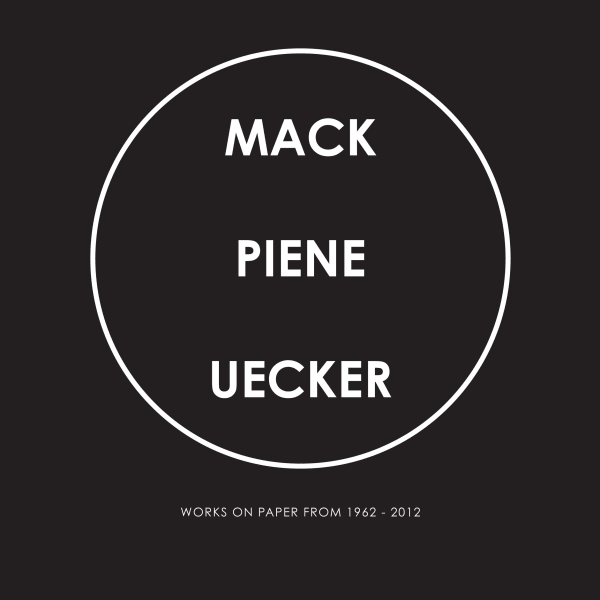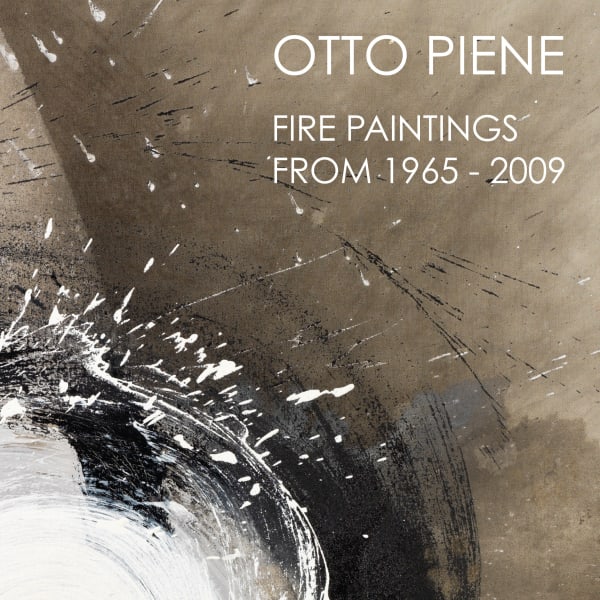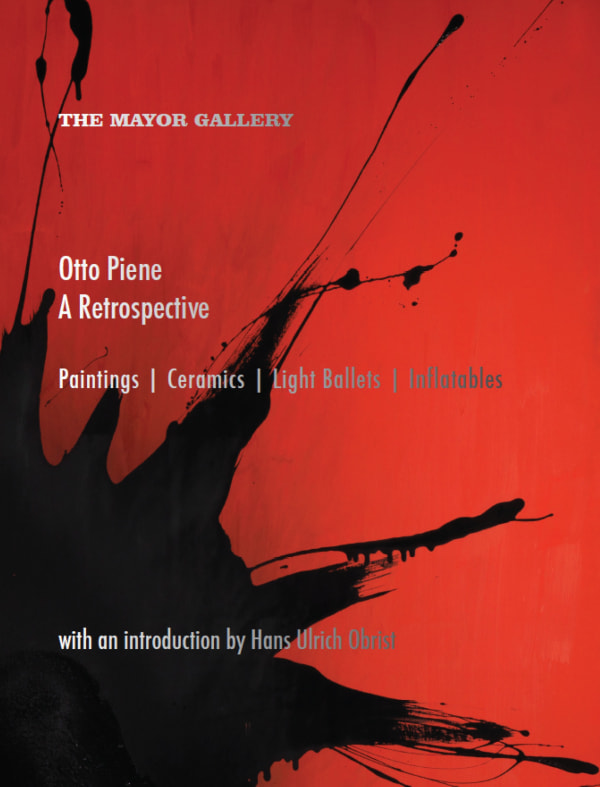Otto Piene German, 1928-2014
Otto Piene (b. 1928 Baadlasphe - d. 2014 Berlin, Germany) studied at the Academy of Art in Munich and later during the late 1950s at the Kunstakademie Düsseldorf where he met Heinz Mack and co-formed the highly influential Group Zero in 1957, latterly joined by Gunther Uecker. ZERO, in contrast to Abstract Expressionism, emphasized art void of colour, emotion, and individual expression.
Piene was highly experimental and motivated by non-traditional art materials and techniques. Best known for his paintings made with smoke and fire (Rauchbilder), Piene applied solvent to pigmented paper and lit it on fire, developing organic images in the residual soot. The “raster” (grid) paintings of stencilled paint, also cast in ceramic, inspired The Light Ballet; a series of sculptural installations in which light was projected from moving globes and brass columns through grids allowing the light to ‘dance’ on the wall.
His technological exploration into light continued with holograms, lasers and strobing, and Piene become the first fellow of the MIT Center for Advanced Visual Studies in 1968. Piene went on to serve as the director of the MIT Center for Advanced Visual Studies from 1974 to 1993.
His works can be found in numerous museum collections around the world, including The Museum of Modern Art in New York, the Walker Art Center in Minneapolis, the National Museum of Modern Art in Tokyo, the Stedelijk Museum in Amsterdam, and the Centre Georges Pompidou in Paris. In 2014, the Guggenheim Museum in New York opened a large-scale historical survey of the work of the ZERO group.
-
 Otto Piene24.Januar.77, 1977Fire gouache on card99.5 x 64.5 cm
Otto Piene24.Januar.77, 1977Fire gouache on card99.5 x 64.5 cm
39 1/8 x 25 3/8 inches -
 Otto PieneGas, 1977Fire gouache on card99 x 65 cm
Otto PieneGas, 1977Fire gouache on card99 x 65 cm
39 x 25 5/8 inches -
 Otto PieneForget It, 1972Fire gouache on card99 x 69.5 cm
Otto PieneForget It, 1972Fire gouache on card99 x 69.5 cm
39 x 27 3/8 inches -
 Otto PieneTheatre, 1972Fire gouache on card99 x 70 cm
Otto PieneTheatre, 1972Fire gouache on card99 x 70 cm
39 x 27 1/2 inches -
 Otto PieneFeuer - Granatapfel, 1964Fire gouache on board72.7 x 102 cm
Otto PieneFeuer - Granatapfel, 1964Fire gouache on board72.7 x 102 cm
28 5/8 x 40 1/8 inches
-

Three Colours
12 Apr - 5 Jun 2021We are excited that The Mayor Gallery will be re-open to the public from the 12 April with our comprehensive exhibition Three Colours, Red-White-Blue . A wide range of artists...Read more -

Red Celebrating Chinese New Year
Abstract Exhibition 5 Feb - 4 Mar 2021The Mayor Gallery wishes you a year of happiness and good health with three online Abstract exhibitions to come in the first three months of 2021. 'White as Snow in...Read more -

MACK PIENE UECKER
WORKS ON PAPER from 1962 - 2012 4 Jun - 24 Jul 2015There have been quite a number of ZERO exhibitions in recent years, including important retrospectives at the Solomon R. Guggenheim in New York, the Martin-Gropius-Bau in Berlin, and the Stedelijk...Read more -

OTTO PIENE
FIRE PAINTINGS FROM 1965-2009 4 Jun - 31 Jul 2014Read more -

OTTO PIENE
A RETROSPECTIVE 23 May - 27 Jul 2012A comprehensive collection of Zero art by its founder member born in 1928, in Germany. In 1957, reacting against Neo-Expressionism, Otto Piene along with Heinz Mack begun the transformative Group...Read more -

ZERO+
28 Jun - 30 Jul 2010Read more
-

Otto Piene : Paths to Paradise
Museum Tinguely, Switzerland December 19, 20237 Feb - 12 May 2024 Otto Piene (1928−2014) aimed high with his art: to shape a more harmonious, peaceful, and sustainable world. His expansive...Read more -

ZERO
EXHIBITION AT MARTIN-GROPIUS-BAU March 21, 2015Over 50 years after the founding of the ZERO movement the exhibition at Martin-Gropius-Bau is devoted not only to the first founding artists Heinz Mack,...Read more

















